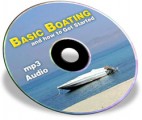Salespage Snapshot

Ebook Table Of Contents
1. What is Paragliding? …………………………………………………………………………………………. 2
2. Learning How to Paraglide ……………………………………………………………………………….. 6
3. Paraglider Equipment ……………………………………………………………………………………….. 9
4. Where to Buy a Paraglider ……………………………………………………………………………… 11
5. How to Build a Paraglider ………………………………………………………………………………. 14
6. Motorized Paragliding ……………………………………………………………………………………… 17
7. Ultralight Paragliding ………………………………………………………………………………………. 20
8. Paragliding vs. Hang Gliding ………………………………………………………………………….. 23
9. Paragliding Schools …………………………………………………………………………………………. 26
10. More About Paragliding Schools ……………………………………………………………………. 29
11. Paragliding in South America…………………………………………………………………………. 32
12. Paragliding in the US ………………………………………………………………………………………. 35
13. Paragliding in Europe ……………………………………………………………………………………… 38
14. Having Fun at Events ……………………………………………………………………………………… 41
15. Paragliding Insurance …………………………………………………………………………………….. 44
PLR Ebook Sample Content Preview
1. What is Paragliding?
A Brief Overview of Paragliding
Paragliding is both a pastime and competitive sport that makes use of assisted human flight. A paraglider is a free-flying, motorless aircraft that can be launched simply by running. The pilot is firmly attached to the harness and to launch into the air he runs rapidly down incline boards, downhill or mountains. Once airborne he sits comfortably in the harness.
The pilot maneuvers the wing by shifting his or her weight and through the use of brakes that can alter the form of the end part of the wing. Aside from manipulating the suspension lines, the form of the wing can also be changed by the pressure of air going through the vents at the front part of the paraglider. As the shape changes, the pilots can change the course of their travel and go virtually anywhere they like providing the weather conditions are good.
Equipment Make Up
The wing of the aircraft is primarily made from rip-stop nylon using special strengthening techniques. This makes the fabric extremely resistant to being torn or ripped apart. The wings are put in place with the use of Kevlar lines that are strong, resistant but light-weight synthetic fiber that secures the pilot’s harness.
The harness is the part of the paraglider where the pilot can use either standing or sitting position and is designed to provide the most comfort and ease during paragliding. Instruments that paraglider pilots use include variometers, radios, and Global Positioning System (GPS) units while flying.
These instruments provide safety for the pilot and enhance their flying experience by giving information on how rapidly they are rising or falling. For individuals who wish to experience the calm and peace of flying like a bird through the clear, blue sky, the investment is worth every penny.
Other Details* Sales Page: Included, HTML, MS Word Doc
* File Format: MS Word Doc, PDF
* Number of Pages: 46
* Included Graphics: Ecovers, PSD
* Download File Size: 4,187 KB












